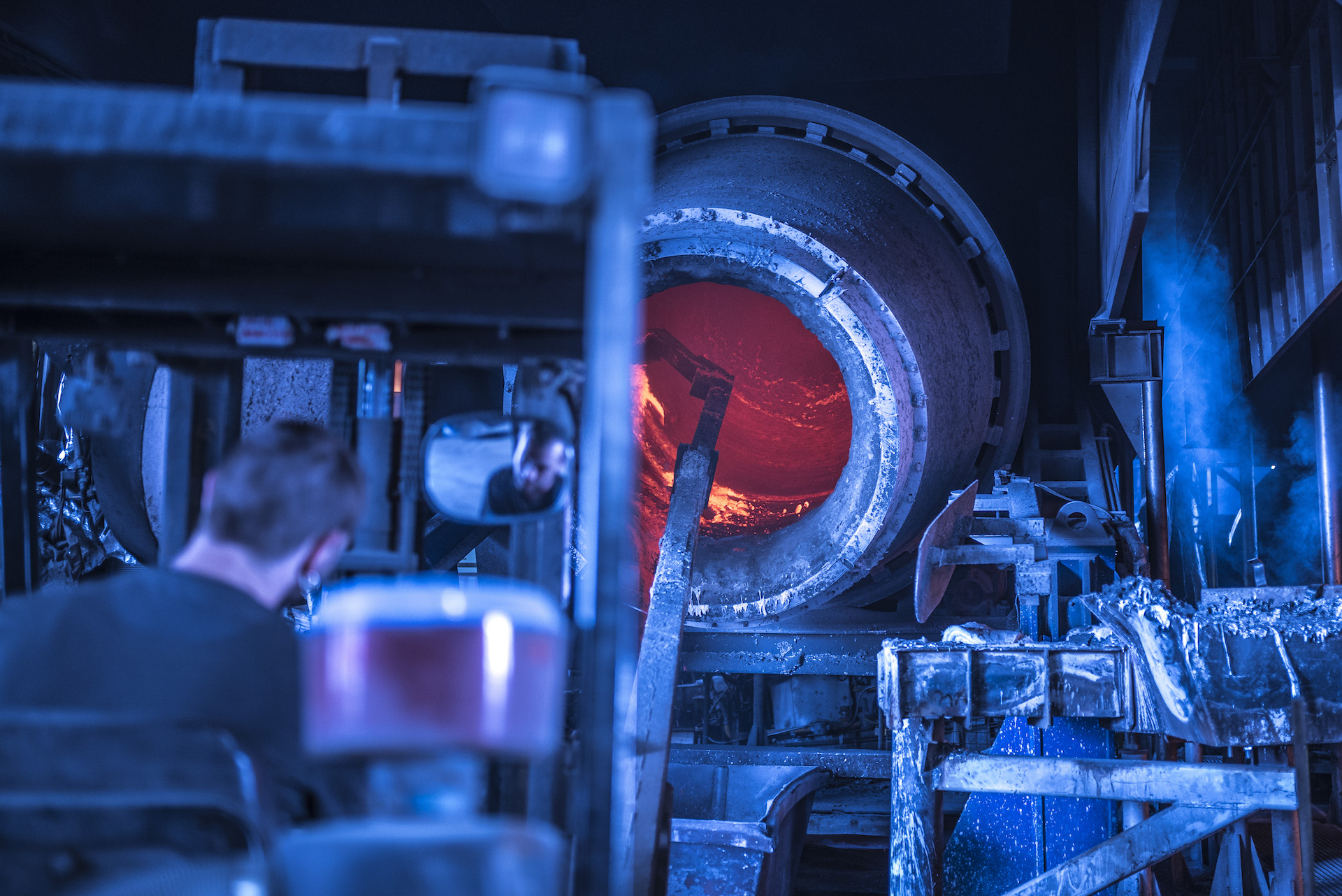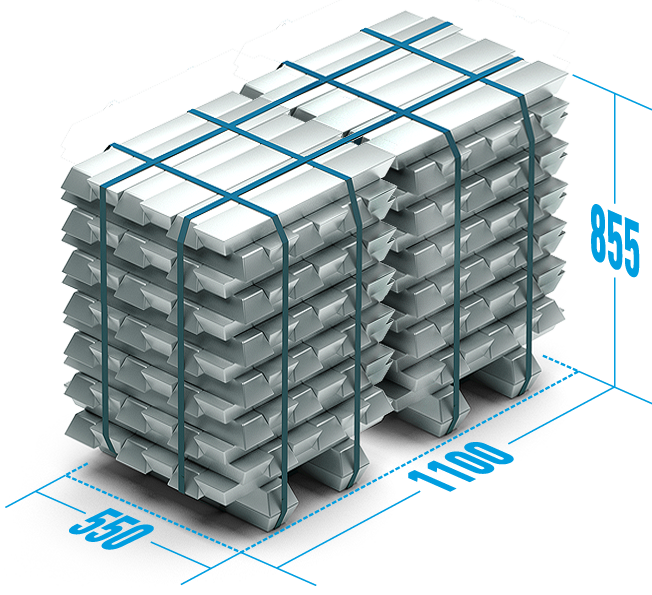
TECHNOLOGY
By entering the melting process, the recycled aluminium waste which is thoroughly sorted out first and from which organic elements are removed in order to make the production itself in compliance with the environmental protection rules is prepared for the new production. The production itself is then done in three rotation furnaces with the capacity of 8 tons, 12 tons and 16 tons and in three settlement furnaces with the capacity of 10 tons, 14 tons and 24 tons. In the rotation furnaces under the coverage salt, the melting process takes place and then the melted alloy is poured into the settlement furnaces.

In the settlement furnaces addition alloying will be done to reach the required chemical composition of the alloy and then the refining process, the overall degassing using porous blocks built into the bottom of the settlement furnace and the settlement of the melt. The final product in form of ingots is made during the casting of the melt into the ingot-moulds of the pouring track. After the ingots are cooled down, robotic palletization will be done. Then the output check is done and the product is ready for expedition.


Production portfolio
The final product is aluminium alloys designed for further processing in the foundries in the automobile, aircraft, electro-technical, chemical, machine and food industries.
The aluminium alloys are produced in compliance with the European standards.
However most of the deliveries are executed with a special more specialised chemical composition in comparison with the basic defined standards in accordance with the customers requirements.
| Al Si 10 Mg | EN AB | 43 000 – 43 400 |
| Al Si | EN AB | 44 000 – 44 400 |
| Al Si 5 Cu | EN AB | 45 000 – 45 400 |
| Al Si 9 Cu | EN AB | 46 000 – 46 600 |
| Al Si (Cu) | EN AB | 47 000 – 47 100 |
| Al Si Cu Ni Mg | EN AB | 48 000 |
| Al Si 7 Mg | EN AB | 42 000 – 42 100 |

PACKAGING AND EXPEDITION
The products (ingots) are packed into stackable packages or double packages with the weight of 500 kg to 1200 kg. The packages are tied by a PET stripe.
Type A



Type B



